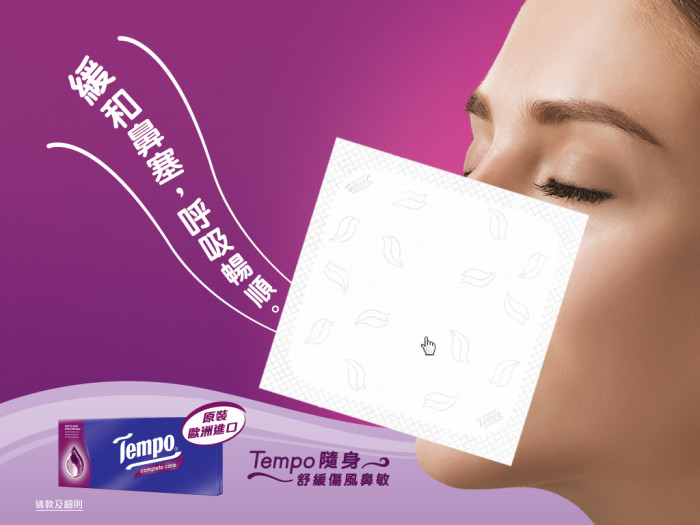



Why mobile marketers are missing the mark
share on
Apple Lam explores the constraints and the way forward for brands hoping to dive into the deep end of the mobile space.
Mobile is the buzz word of the era of digital marketing, but marketers don’t seem to be fully harnessing the power of mobile technology to offer truly engaging and interactive campaigns.
To begin with, even getting a consensus on what counts as real mobile marketing is not easy.
For Ivy Wong, CEO of HMVideal, customer engagement is the magic marker of true mobile marketing.
I don’t feel that placing video or banner ads on mobile devices is mobile marketing. That’s just mobile media placement.
Ivy Wong, CEO
HMVideal
“Marketing is about connecting and engaging with people. A video ad or a very small banner on a mobile device does not engage me.”
But Aileen Ho, marketing director at Svenska Cellulosa Aktiebolaget (SCA), which owns Tempo, says display ads count as mobile marketing if they help achieve marketing objectives.
“For example, if you are raising awareness for a new product or promoting a, ‘buy three for HK$100’ discount, the display ad is a form of marketing,” she says.
“But if your aim is engagement, display ads would be meaningless because you need to give users an incentive to take part. Interactive uses of mobile and PC are good ways of doing engagement.”
However, engagement cannot trump the ultimate marketing objective – driving the customer to make a purchase.
“Just because someone engages with your brand does not mean that he or she will buy the product,” says Larry Chan, digital manager at L’Oréal Hong Kong. Chan oversees the L’Oréal Paris, Garnier and Maybelline New York brands.
He points out that reviewing the path-to-purchase – from awareness to evaluation to purchase – helps marketers figure out what kinds of mobile elements fit into the customer’s journey. Mobile elements should shorten or simplify the path-to-purchase, making it more efficient and even exciting for the customer.
Meanwhile, Rohit Dadwal, managing director of Mobile Marketing Association in the Asia Pacific, disagrees with the idea mobile marketers are not creative enough.
“For some reason, the mobile marketing industry seems to have a bad reputation when it comes to creativity. I would like us to get rid of this notion. Mobile has only been used as a marketing medium for about five years and we have seen great examples from advertisers all over the world,” he says.
“The bottom line is that simplicity and storytelling are still the two main tenets of great advertising. If the idea isn’t solid, doesn’t have a clear sense of purpose, an understanding of core consumer values and a strong connection with brand strategy then no amount of augmented reality, QR codes or mobile apps will have the desired impact.”
But the constraints on creativity are manifold.
First, digital infrastructure required for using mobile marketing campaigns to reach the masses is not yet mature in Hong Kong, with few available platforms for executing creative ideas.
“Most platforms offer news feeds or display ads. For one of our product lines, we were looking for a platform to present a game where you can rub a character’s nose with a virtual tissue to help them get rid of their red nose,” Ho says.
“It’s a fun and creative idea that we wanted to do because it matched our print ad visual. But not many platforms could handle it – only two or three platforms were available, of which we chose two, but their reach was limited.”
She adds mobile marketing campaigns require plenty of preparation on the technological front.
This includes testing to ensure the end-user experience is consistent across mobile operating systems, phones and browsers. A complex mobile game can take a week to debug.
Servers that can handle large amounts of traffic also need to be set up in advance of campaigns, such as those involving photos and videos.
Another constraint is the path-to-purchase. Mobile marketing campaigns that make a statement are often seen as the pinnacle of creativity, but Chan says such campaigns will only boost sales if the product lends itself to impulse buying.
“With explosive campaigns, customers remember you when they are faced with many brands in the store and they purchase your product on impulse,” he says.
“But women tend not to make impulse purchases of beauty products – they need to try and research products first – which is why beauty brands do plenty of education and help customers evaluate if a product is right for them."
He cites this as one reason why people often think the beauty industry is relatively conservative in its marketing, but in fact, many campaigns focusing on educating the customer reflect the path-to-purchase.
However, Chan cautions against ruling out impulse purchases in the beauty industry entirely.
"The purchase of beauty products can be impulsive sometimes, for example, if the point-of-sale display is sharp and the product is colourful - the path-to-purchase is not always awareness-driven," he says.
A third constraint is mindset. It’s not that marketers aren’t open to using mobile in their campaigns – instead they are too focused on doing mobile marketing campaigns for the sake of doing them, rather than doing mobile marketing creatively to enhance an integrated campaign.
“For a while, marketers have been thinking, ‘I have to do mobile advertising and marketing. If I am not doing that then I am falling behind’. So they don’t really think about what is unique about the medium,” Wong says.
She argues the way forward for mobile marketing is to see mobile as part of integrated marketing. Figuring out how to integrate mobile into the mix will then become a source of creativity.
“Integration is the crucial part of the puzzle that leads to creativity. It pushes you to think about how you can bring out the best in different media to connect with the customer.”
Regarding the technical constraints, Ho is optimistic they will become less of a problem in the future, expanding the space for creativity.
“As we go on, there will be fewer and fewer technological problems and mobile as a medium will grow faster than traditional media, just like how when free newspapers first came out, they grew rapidly compared to paid newspapers, which are still read by some people,” she says.
Ho predicts marketing campaigns incorporating mobile will become even more sophisticated as the level of engagement goes up.
“In the past, you only needed to adapt print and display ads for four or five different types of media. Now, for a mobile campaign that asks users to make choices in multiple stages, you will probably need five versions of a visual for each choice made by the customer to build a matrix of 50 to 60 different layouts,” she says.
“Mobile campaigns have to be more sophisticated because the content must cater to the user’s needs and be interactive.”
Sophistication can place limits on the reach of mobile because mobile campaigns are much more challenging to produce than the typical TVC.
Currently, marketers often use TV to kick-start a campaign, throwing in other types of media such as digital, mobile, print and out-of-home to supplement customer interest generated by a TVC. If mobile campaigns require a high level of sophistication, this affects whether mobile can replace TV as the main driver of campaigns.
“Which medium should take the lead in the advertising mix? With TV, it’s very simple – just produce and broadcast a 30-second TVC,” Chan says.
But to make mobile the leader of the pack, you have to develop innovative content that is interactive, generate a buzz that could make it go viral and be integrated with offline and online components of your campaign. That’s very challenging to achieve.
Larry Chan, digital manager
L'Oreal Hong Kong
Mobile-friendly viral videos have the potential to become drivers of campaigns, says Ho, but because they have not been around for as long as TV ads, there is no tried and tested formulae for producing successful viral videos.
To deliver an impactful mobile experience through the brightly lit screens we hold so dear, a fair amount of hard work and courageous trial and error will be required to overcome the challenges and raise the bar for creativity in mobile marketing.
[Top Image]: Shutterstock
share on
Free newsletter
Get the daily lowdown on Asia's top marketing stories.
We break down the big and messy topics of the day so you're updated on the most important developments in Asia's marketing development – for free.
subscribe now open in new window




